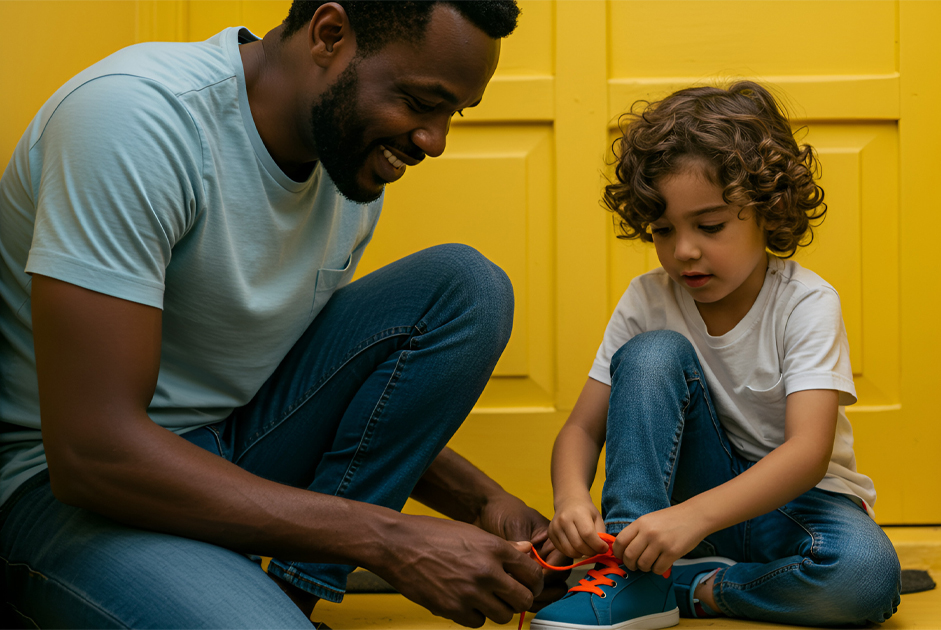Aisles full of toys with bright colors, high-interest buttons, and curious sounds have been integrated by technology; yet, not all have the wow factor to be ideal for a child between the ages of two and six. Parents, relatives, and all those who want to see a child engaged in a toy for hours need to consider the open-ended uses that promote education, exploration, imagination, and creativity.
Consider the following tried and true gifts to delight a preschooler.
Pop-up Playhouse: Whether the shape is a rocket ship, house, teepee, or knight’s castle, the play tent provides a private playroom for reading, pretend-play, or play dates. Tent poles join easily to create a pop-up playhouse for one day or a permanent set-up. The washable walls and heavy-duty material ensure the fort can grow with a rough-and-tumble child.
Tip: Always buy age-appropriate toys to target a child’s ideal developmental stage; recommendations offer safety from potential choking hazards or other complications.
Tip: It’s better to purchase flimsy walls and a collapsible frame than an item that will consume an entire room. Size matters!
Pogo Jumper with Foam Base, Obstacle Courses, or Stepping Stones for Kids: Developing balance on a pogo stick, creating a course using body movements, or stepping from one surface to another, helps concentration levels, motor coordination, and strengthens the body. Indoors or outdoors, gifts that center on exercise offer more than just a skill.
Tip: Always read reviews to see what comments, both good and constructive, parents are saying about particular toys, puzzles, or games.
Doctor’s Kit: The popularity of television series such as Doc McStuffins allowed children to engage in pretend play through real-world situations—bandaging boo-boos, administering shots, and treating upset bellies of beloved stuffed animals. A doctor’s kit is an integral part of a preschooler’s life. Modern bags include the technology for sounds and lights in a cell phone, stethoscope, thermometer, and blood pressure cuff.
Tip: Costume shops and children’s consignment stores offer a large assortment of clothing and accessories. A gift to impress is to assemble a chest (also known as a Rubbermaid container) full of capes, hats, swords, shields, and wands. Dress-up can be a daily experience!
Microscopes and Cash Registers: Preschoolers are sponges of information. The introduction to science and mathematics can happen at any age. The younger, the better! Try to identify toys with moveable parts and a voice component, so that children can understand, for instance, the significance of a microscope’s slide. Initially, a toy may need an adult’s guidance, but in time, children will engage in imaginative games all by themselves.
Tip: Preschool children are tactile. Magnet games, whether tiles, blocks, letters, numbers, or games, can help develop spatial awareness and small motor skills. Consider it an advantage if a game or puzzle includes a latching box or drawstring bag for easy cleanup!
Tip: Marble drop games, such as marble rallies and gravity tracts, using suction cups on a door or refrigerator, teach special, three-dimensional thinking through a unique assembling opportunity. Adding parts as a child grows older is always an option.
Books and More Books: Consignment shops and websites offer discounted prices on gently used books. You certainly cannot go wrong with the following titles or authors.
- We’re Going on a Bear Hunt by Michael Rosen
- The Very Hungry Caterpillar by Eric Carle
- Mercy Watson Boxed Set: Adventures of a Porcine Wonder: Books 1-6 by Kate DiCamillo and Chris Van Dusen
- Go Dog Go by Dr. Seuss
- Magic Tree House books by Mary Pope Osborne and Sal Murdocca
Tip: Children learn through songs, repetitious phrases, or rhyming couplets. Books that possess those particular formats will become quick favorites. Please, don’t let multi-syllable words prevent families from buying picture books; instead, create a teachable moment! In addition, “My First” or “Step into Reading” books prepare children to become readers. Illustrations that reflect the text, such as Go Dog Go, are why children feel successful and choose to read a book a thousand-plus times!
Not all gifts require wrapping paper and ribbons. In thinking outside the box, surprise a daughter or son, niece or nephew with a special outing. Whether buying one-day tickets or annual passes to an interactive-based science center or museum, a tactile learning experience will be one of enjoyment and memory!



















